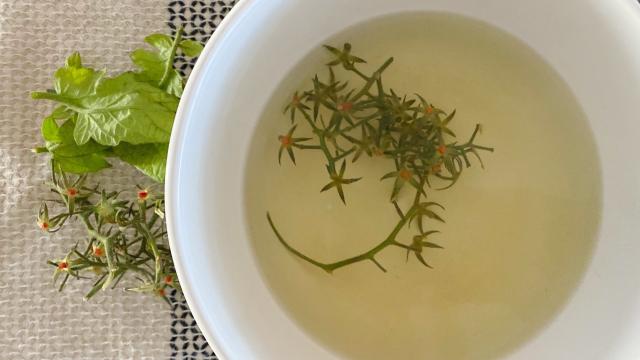I love the smell of tomato leaves. I think they’re summery and seductive — so much so that I often douse myself in a tomato leaf-scented perfume (that I made myself at a “perfume college” in the South of France). For me, the smell of tomato leaves ranks almost as high as the taste of tomatoes, which is why I was thrilled to find that they aren’t actually as poisonous as a lot of people say they are.
Tomato leaves are just a little bit poisonous
“The dose makes the poison” is one of the tenets of toxicology, and something I wish more people would commit to memory. The adage is credited to Paracelsus, a literal Renaissance man who expressed, “All things are poison, and nothing is without poison; the dosage alone makes it so a thing is not a poison.”
Take ethanol, just as an example. Known as “the alcohol that makes you feel fun for a bit,” it is, without question, a toxic chemical. Too much of it can kill you, and even a little of it can make you feel like pure excrement, but that doesn’t stop us from guzzling it in its many varied forms. Tomato leaves are even less harmful than ethanol.
Tomato leaves, stems, and unripe, green tomatoes, all contain solanine, a toxic glycoalkaloid found in all members of the “deadly” nightshade family, but they contain very little of it. Tomato leaves and stems also contain small amounts of tomatine, another toxin of the same family. According to Harold McGee, one would have to consume over a kilogram of tomato leaves to ingest a toxic (but still probably not lethal) dose. Luckily, like many verdant herbs, you don’t need to use a lot of tomato leaves (or stems) to give your dish a bit of fresh, herbaceous flavour.
But what do they taste like?
Tomato leaves and stems are downright unpleasant in their raw form, but the same could be said of rosemary. I tried sautéing the leaves in some butter, and at first I thought I liked them, but really I was just enjoying the butter. The texture was chewy and unpleasant, and the flavour a bit too medicinal, though both are improved if you cook them longer, like you would chard or mustard greens.
My favourite way to use them, however, is as an herb for soups, stews, and the like. When bundled up and simmered in a sauce (or even plain water), the leaves and stems impart a pleasant, herby, savoury tea-like flavour. It’s nice! I don’t know that I’d base an entire dish around tomato leaves, but they’d make a nice addition to a bouquet garni, pesto (obliteration by blade really helps with texture), or (unsurprisingly) tomato sauce.
If you don’t believe me, believe a fancy chef. According to Food Republic, Portland’s Jenn Louis “blanches, dries and blends the leaves into pasta dough, and serves the pasta with butter and fresh tomatoes.” I don’t see myself doing all that, but it’s nice to have the option, particularly when you consider the veritable bounty of stems and leaves right outside my door. (Don’t worry, I won’t eat them all at once.)

Leave a Reply
You must be logged in to post a comment.